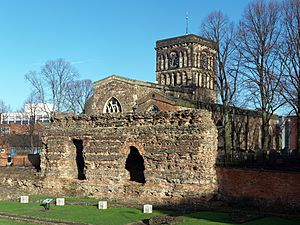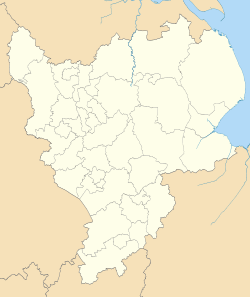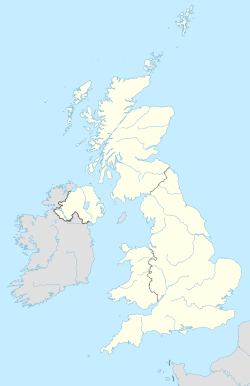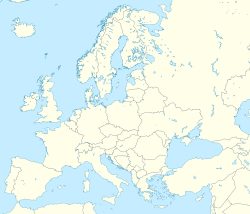Jewry Wall facts for kids

The wall with St Nicholas' Church in the background
|
|
| Location | Leicester, England |
|---|---|
| Coordinates | 52°38′5.71″N 1°8′29.13″W / 52.6349194°N 1.1414250°W |
| Type | Roman |
| History | |
| Periods | Iron Age and Roman Empire |
| Site notes | |
|
Listed Building – Grade I
|
|
| Official name: Jewry Wall, St Nicholas Circle | |
| Designated: | 5 January 1950 |
| Reference #: | 1074773 |
The Jewry Wall is a large, ancient Roman wall in Leicester, England. It was built around 125-130 AD, nearly 2,000 years ago! This impressive wall has two big archways and stands next to St Nicholas' Church. It was once part of a huge public building in the Roman city of Ratae Corieltauvorum, which is what Leicester was called back then.
The wall was part of a public bath complex. The foundations of these baths were dug up in the 1930s and you can still see them today. The wall also gives its name to the Jewry Wall Museum right next door.
Contents
What's in a Name?
The name "Jewry Wall" was first written down around 1665. People aren't completely sure where the name came from. It probably doesn't have anything to do with the small Jewish community that lived in Leicester a long time ago, as they were asked to leave the town in 1231.
One popular idea was that the name came from the "jurats" (important town officials) who met nearby. However, it's more likely that the name comes from an old belief. In many places, people used to call mysterious old ruins "Jewry" if they didn't know who built them. You can find similar names for ancient sites in other parts of England and Europe.
What Does the Jewry Wall Look Like?
The Jewry Wall is an amazing example of Roman building work that is still standing. It was built around 125–130 AD. The wall is about 23 meters (75 feet) long, 8 meters (26 feet) high, and 2.5 meters (8 feet) thick. It is one of the biggest pieces of Roman public architecture still standing in Britain.
The wall is made from different layers of Roman brick and stone. These stones include local granite, limestone, and sandstone. In the middle of the wall, there are two large arched openings. Each arch is about 3 meters (10 feet) wide and 4 meters (13 feet) high. There are also more arched spaces on the eastern side of the wall.
The wall is right next to St Nicholas' Church. This church was built much later, but it uses many Roman bricks and stones that were recycled from other Roman buildings.
What Was the Wall Used For?
For a long time, people wondered what the Jewry Wall was part of. In the 1700s and 1800s, some thought it was a Roman temple or even a town gate. But these ideas weren't quite right.
In the 1930s, an archaeologist named Kathleen Kenyon started digging around the wall. She found the remains of the Roman town's public baths right next to the wall. Today, you can visit the wall and some of these bath foundations.
Most experts now agree that the Jewry Wall was the western wall of a large building called a palaestra. This was like a gymnasium or exercise area that was part of the Roman public baths. So, the wall was a key part of the ancient Roman leisure and fitness center!
The Jewry Wall was taken care of by the government in 1920. Now, English Heritage looks after it. The wall itself is a very important historical building, known as a Grade I listed building. The whole area, including the baths and St Nicholas' Church, is a protected historical site.
Jewry Wall Museum
The Jewry Wall Museum is located right across from the Jewry Wall ruins. This museum is home to many cool artifacts from the Iron Age, Roman times, and the medieval period in Leicester. It's a great place to learn about the city's past.
The museum building is also a listed building, meaning it's historically important. It's run by Leicester City Council and is free to enter, which is awesome!
A group called the 'Friends of Jewry Wall Museum' was created in 2004. They work hard to support and promote the museum. Even though the museum's opening hours were reduced in the past to save money, it remains a popular and important place to visit.
See also





